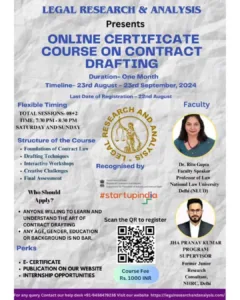
Supreme Court Refuses To Entertain Kapil Dev's Plea Challenging Provisions Allowing "Destruction” Of Stray Dogs & “Unwanted" Animals.

Supreme Court Declines Petition Challenging Cruelty to Animals Act Provisions
On Monday, the Supreme Court rejected a petition that former Indian cricket team captain Kapil Dev and two other campaigners had brought challenging several of the Prevention of Cruelty to Animals Act’s provisions. These particular clauses permitted the annihilation or destruction of any animal in accordance with any legislation, as well as the killing of stray dogs using deadly chambers or other specified procedures.
An upsetting occurrence in November 2022, when a pregnant stray dog was brutally beaten and died in Delhi, prompted the filing of the petition. The argument made in the petition was that the current legal framework was insufficient to provide adequate protection for animals, a problem that pervaded the whole nation.
The petitioners asked for regulations to guarantee animal welfare and more efficient prosecution of animal abuse incidents. They also argued that Sections 428 and 429 of the Indian Penal Code and Section 11(1) of the Prevention of Cruelty to Animals Act were unconstitutional due to the inadequate severity of the suggested penalties for animal abuse.
The court made it clear that the desired reliefs might be sought at the High Courts. The petitioners were given permission to withdraw their argument from the bench, which was made up of Justices Hrishikesh Roy and Pankaj Mithal. This gave them the freedom to file a new case with the appropriate High Court for further action.
Senior Advocate Challenges Disparity in Punishments for Animal Cruelty
In his argument on behalf of the petitioner, Senior Advocate Aman Lekhi drew attention to a stark difference in the penalties for animal abuse under Sections 428 and 429 of the Indian Penal Code (IPC). The maximum sentence for murdering or maiming an animal worth less than ten rupees is two years in jail, according to Section 428 of the Indian Penal Code.
However, under Section 429 IPC, the same offence carries a five-year maximum jail sentence if the animal is valued at less than Rs. 50. Lekhi stated that such discrimination based on the animal’s utility and commercial worth is totally arbitrary and unjustified.
Lekhi used the 2014 case Animal Welfare Board of India v. A. Nagaraja to make the point that animals have the right to be spared torture and protection from needless suffering. Since laws are made by humans, the punishment for breaking these rights is seen to be inconsequential. He argued that the consequences outlined in Section 11(1) of the Act, which addresses animal cruelty, do not sufficiently reflect the seriousness of the offence. As a result, violators of these rules operate with impunity, which undermines the Act’s fundamental goals.
Lekhi also cited Sections 11(3)(b) and (c) of the Act, which permit the killing of stray dogs using lethal chambers or other techniques, and Section 9(f) of the PCA 1960, which gives the Animal Welfare Board the responsibility of ensuring that local governments kill unwanted animals.
Unfair Classification of Animals and Lack of Guidelines Challenged in the Act
The petitioner expressed concerns about the Act itself, drawing attention to an unfair classification that distinguishes between unwanted and useful animals and gives their lives differing worth.
The petitioner also questioned the provisions of Section 11(3) of the Prevention of Cruelty to Animals Act, 1960, which exempts certain animal husbandry practises as branding, dehorning, castrating, and nose-roping. The petitioner drew attention to the fact that there are no set rules or standards to make sure that these treatments are carried out without injuring the animals involved.
Senior Advocate Aman Lekhi, who is representing the petitioner, said when asked why he chose to file a case directly with the Supreme Court: “The reliefs sought pertain to the nationwide implementation of the Act and are not limited to the jurisdiction of any specific High Court.”
Misuse of Central Act and the Role of High Courts in Granting Reliefs
Senior lawyer Aman Lekhi continued to make his case, stressing that the fundamental problem at hand is the abuse of a Central Act, which has repercussions throughout India. He said that the way the law is now being applied has reduced animals to nothing more than inanimate objects with no inherent value. Lekhi claimed, using legal precedents, that when the legislature has failed to act appropriately, the Courts have traditionally intervened to close gaps in the law.

The bench voiced concerns about hearing the matter despite the senior counsel’s strong arguments, noting that the High Courts had equal authority to grant the requested reliefs.
The bench declared, “Your petitioners’ standing is very high in the country; they will earn the same respect even if they go to the HC.” Additionally, it voiced worry that if the Supreme Court decides to take on such cases, it could give the appearance that the High Court is unable to handle such weighty issues.
Petitioner Seeks Permission to Withdraw Writ Petition
The petitioner asked authorization to withdraw the writ petition after carefully weighing the reasons put forward during the hearings. They stated that they intended to approach the High Court with the identical writ petition’s specific prayers. The writ petition was dismissed after the bench acknowledged the petitioner’s motion and granted permission for withdrawal.








